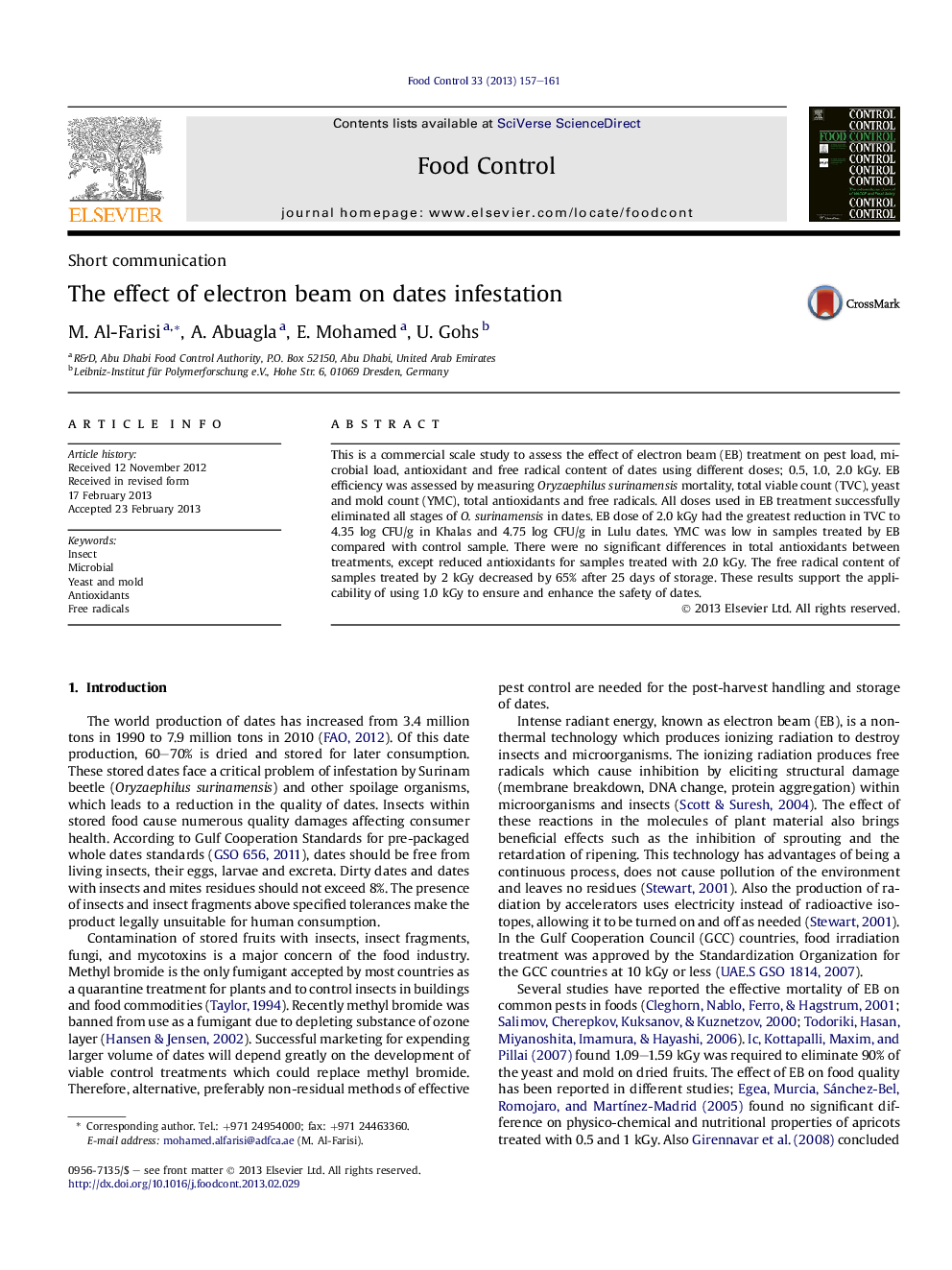| Article ID | Journal | Published Year | Pages | File Type |
|---|---|---|---|---|
| 6392496 | Food Control | 2013 | 5 Pages |
This is a commercial scale study to assess the effect of electron beam (EB) treatment on pest load, microbial load, antioxidant and free radical content of dates using different doses; 0.5, 1.0, 2.0 kGy. EB efficiency was assessed by measuring Oryzaephilus surinamensis mortality, total viable count (TVC), yeast and mold count (YMC), total antioxidants and free radicals. All doses used in EB treatment successfully eliminated all stages of O. surinamensis in dates. EB dose of 2.0 kGy had the greatest reduction in TVC to 4.35 log CFU/g in Khalas and 4.75 log CFU/g in Lulu dates. YMC was low in samples treated by EB compared with control sample. There were no significant differences in total antioxidants between treatments, except reduced antioxidants for samples treated with 2.0 kGy. The free radical content of samples treated by 2 kGy decreased by 65% after 25 days of storage. These results support the applicability of using 1.0 kGy to ensure and enhance the safety of dates.
⺠Electron beam was an excellent tool to eliminate dates' pest and reduce microbial loads. ⺠Electron beam doesn't affect dates' antioxidants. âºÂ Most of free radicals produced by electron beams neutralized during storage. ⺠Electron beam at 1.0 kGy was the optimum dose for disinfestations of dates.
